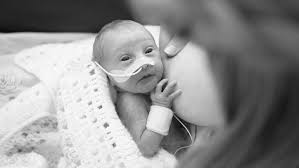While the dramatic rescue of a newborn abandoned in a Tharaka Nithi bush has rightfully captured national attention, the story represents more than just a one-time tragedy. It serves as a painful symptom of systemic failures that demand our collective attention and action.
The image of a helpless infant, discarded with the placenta still attached—the very lifeline that sustained its first moments of life—is one that haunts the conscience of a nation. Yet, as we celebrate the miracle of this child’s survival, we must confront the uncomfortable questions this incident raises about our social fabric.
The Anatomy of a Crisis: What Leads to Such Desperation?
The abandonment of a newborn is rarely an act of premeditated cruelty. More often, it’s a final, desperate act born from overwhelming circumstances:
-
Overwhelming Fear and Stigma: Young, unmarried mothers often face devastating social stigma, family rejection, and economic ruin.
-
Mental Health Crisis: Postpartum depression and psychosis, compounded by isolation and lack of support, can severely impair a mother’s judgment and bonding.
-
Extreme Poverty: The crushing weight of providing for a child without any visible means can create an unimaginable sense of hopelessness.
-
Lack of Knowledge: Many women are simply unaware of the legal and safe alternatives, such as the “Safe Haven” laws or the process of voluntary admission to a children’s home.
The Resilience of the Human Spirit: A Community’s Response
In the face of this failure, the response from strangers offers a blueprint for what a caring society should look like. The anonymous passerby who stopped to investigate a faint cry, the police officers who acted with urgency, and the medical staff who provided compassionate care—each represents a link in a chain of humanity that gave this child a second chance.
“This child is a fighter,” a nurse at the facility caring for the baby reported. “We are providing not just medical care, but the warmth and human touch every newborn deserves. We’ve named her ‘Hope‘ as a testament to her will to live.”
Beyond Rescue: What Happens Next for “Baby Hope”?
The immediate crisis is over, but the journey is just beginning. The child, now under the care of the Children’s Department, faces a long road. The process will involve:
-
Continued medical monitoring for physical and developmental health.
-
Placement in a registered children’s home or with foster parents.
-
A legal process that may eventually lead to adoption.
Meanwhile, the search for the mother continues, not with the primary goal of prosecution, but of offering her the help she so clearly needs.
A Call to Action: Building a Safety Net That Prevents Tragedy
Reactive rescue, while essential, is not enough. We must build proactive systems of support. Here’s what needs to happen:
-
Amplify “Safe Haven” Awareness: Publicize locations (hospitals, police stations, children’s homes) where a mother can safely and anonymously surrender her newborn without fear of legal consequences.
-
Strengthen Community Health Programs: Empower Community Health Volunteers (CHVs) to identify and support at-risk pregnant women in their areas.
-
Integrate Mental Health Services: Make postpartum mental health screening and support a standard part of maternal healthcare.
-
Combat Stigma through Education: Launch community dialogues to reduce the shame associated with unplanned pregnancy and encourage families to support their daughters.
Conclusion: From One Child’s Plight to a National Conversation
The story of Tharaka Nithi’s abandoned baby is not an isolated incident. It is a mirror held up to our society, reflecting both our failings and our capacity for compassion. Let this child’s cry in the wilderness be the call that jolts us from complacency. Let us channel our outrage and empathy into building a society where no mother feels so trapped, and no newborn must fight for survival alone. The life of “Baby Hope” depends on the systems we build today.










